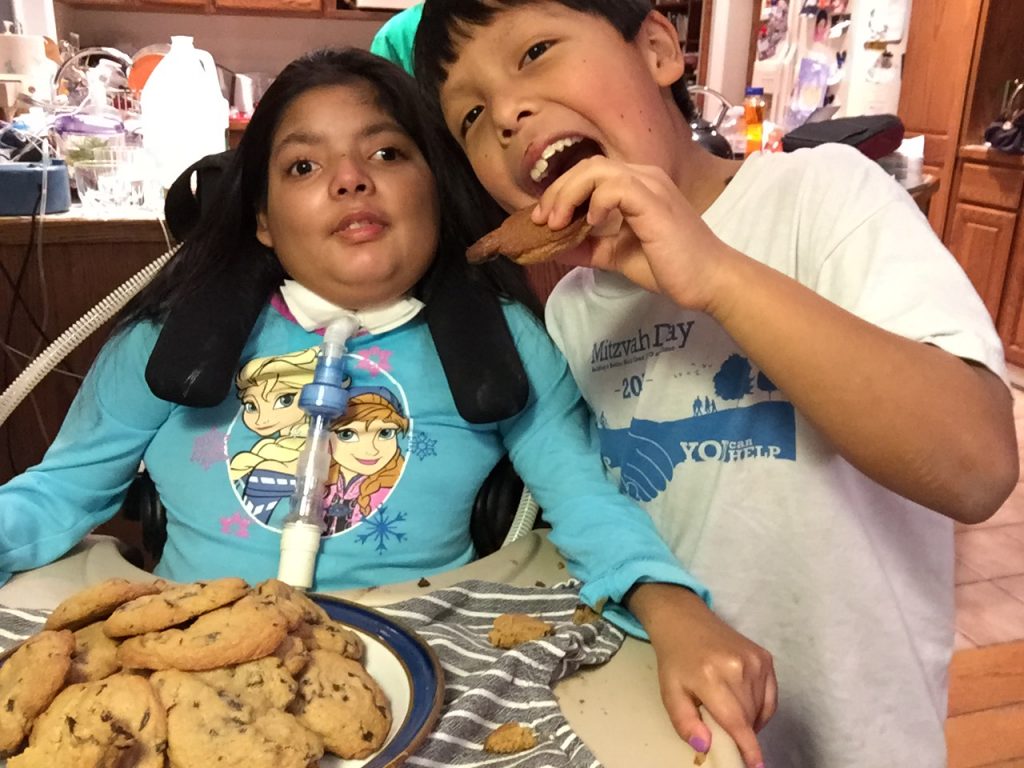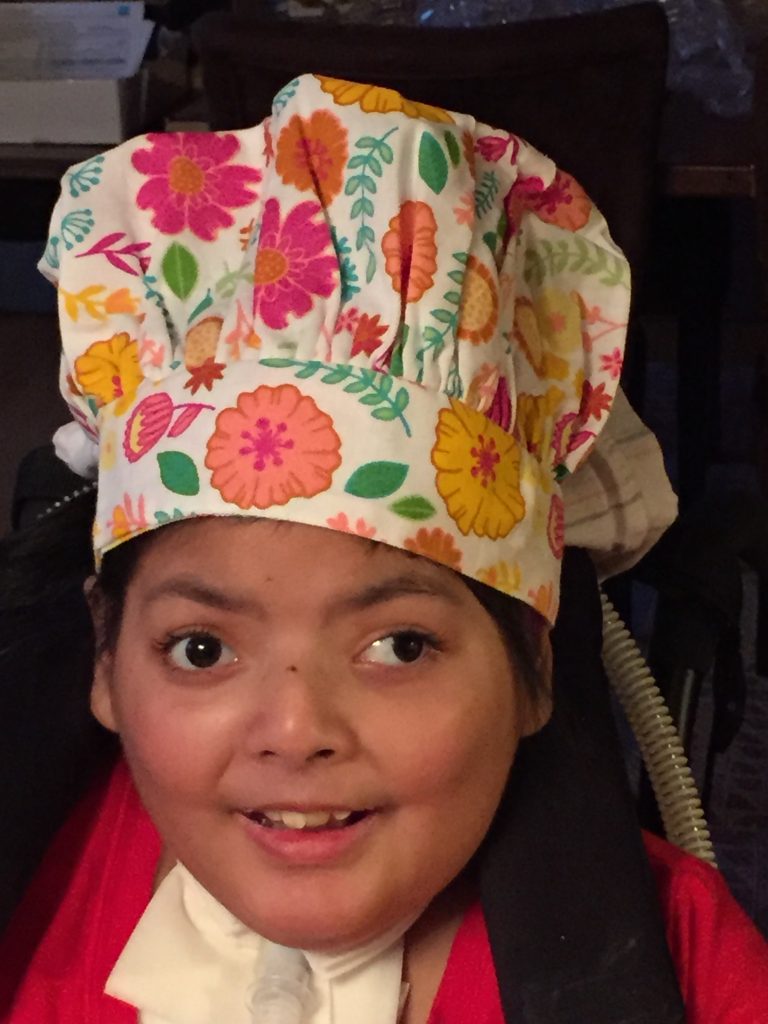The first time I fed my daughter was the day I met her in Guatemala City, when she was three months old. I held her tentatively as I offered her the bottle of the special formula my husband had gone to three farmacias to find. I marveled at her huge dark eyes and her perfect dollop of a nose. I softly sang the Hebrew lullabies that had imprinted on me when I was a baby, hoping they conveyed the love I already felt for her.
A few months later, we were given clearance by the Guatemalan and U.S. governments to adopt her. We named her Dalia and brought her home to our little family back in Boston. Now I was the mother of two, a baby daughter and a 3-year-old son. I juggled Dalia’s feedings with the thousands of things I did each day – working and potty training and begging the kids to nap; searching for lost toys and wiping tears and reading bedtime stories until I fell asleep.
Soon, Dalia was eating the Cheerios and cut-up grapes I placed on her high-chair tray. We brought home another baby the next year, and Dalia beamed while giving “her” baby his bottle, singing the lullabies I’d sung to her. Before long, Dalia was eating dinosaur-shaped chicken nuggets and smiley fries. She shared my weakness for potato chips. The two of us could go through a party-size bag in one sitting if my husband didn’t intervene.
When Dalia was diagnosed with MERRF Syndrome at age 5, we added a heaping bowl of applesauce to each meal to mask the array of medications she had to take. At 9, her disease erupted. A cold turned into pneumonia, landing us in the hospital for three months. She came home with a roomful of machinery – a fancy wheelchair, a ventilator, a food pump, and an array of equipment we didn’t want to believe our little girl needed. Dalia had a trach tube in her neck and a g-tube in her belly. The only thing she could eat was the Pediasure we poured into her pump bag each day.
Dalia hated not being able to eat even more than not being able to walk, so my husband and I tried to shield her from everything food related. We took turns eating dinner with the boys, while the other played with Dalia in her room. We hardly drove within a 100-foot radius of the supermarket if Dalia was in the car.
But then, the night before Dalia started at a new school that would cater to her complex needs, I read the schedule online. There, in between “Speech Therapy” and “Social Studies,” were two words that terrified me: “Cooking Class.”
“What are we going to do?” I asked my husband. “How can they make a child who can’t eat go to cooking class? Can we get her excused?”
“Let’s see how it goes tomorrow,” he said, “and then we’ll decide what to do.”
 The next day, Dalia came home with a huge smile. The first thing she did was pull four chocolate-chip cookies out of her backpack. She handed one to my husband and me and one to each of her siblings. Then she watched with pride as we ate them and cooed over their deliciousness. When I emailed the teacher to check in, she said Dalia’s favorite part of the day was cooking class. She loved getting her hands gooey and watching the cookies take shape through the oven door.
The next day, Dalia came home with a huge smile. The first thing she did was pull four chocolate-chip cookies out of her backpack. She handed one to my husband and me and one to each of her siblings. Then she watched with pride as we ate them and cooed over their deliciousness. When I emailed the teacher to check in, she said Dalia’s favorite part of the day was cooking class. She loved getting her hands gooey and watching the cookies take shape through the oven door.
That night, Dalia asked if she could help make dinner. And then, since she’d helped make it, we sat together – all of us – at the kitchen table. Dalia commenced the festivities using a spatula as a baton. It felt like a reunion – the first time we’d spent dinnertime together since we’d returned from the hospital 18 months earlier.
After that, Dalia wanted to spend more and more time in the kitchen. She’d choose recipes from the troves of cookbooks that lined our shelves and help bake all kinds of delicacies that she couldn’t eat and I couldn’t resist.
Five pounds and a few weeks later, Dalia asked if we could all go out to dinner, a once-weekly routine we’d avoided since she got her g-tube. We were reluctant to agree – it was one thing to sit around the table together at home, where a typical family dinner lasts 15 minutes on a good night and where we could cut our losses if Dalia became upset. It would be another thing entirely to be in a restaurant where we’d be stuck waiting for the meal to arrive and where Dalia would be bored and potentially frustrated watching all of us eat.
But Dalia wouldn’t let it drop. Over and over again she pleaded, “Can we go out to dinner?” until she simply wore us down. We chose Legal Sea Foods, on the theory that Dalia could occupy herself watching the colorful fish in the tank if she became restless or frustrated. We brought coloring books and puzzles, so she’d have options of things to keep her busy while the rest of us ate. But we needn’t have bothered. Dalia was so happy to people-watch, and when the food came she wanted to stir my salad and help pour the dressing.
Dalia had always been the most social of our three kids, and somehow we’d taken away her opportunity to participate in the most social ritual we have. Gathering in the kitchen, preparing a meal, or going to a restaurant are about so much more than the food we consume. By trying to protect Dalia from feeling different or left out, we were doing exactly that – making her feel different and left out.
I’d watched every episode of “Clifford” with Dalia at least ten times. So how could I not have remembered the episode where KC, the three-legged dog, moves to town and the other dogs have no idea how to treat him? They overcompensate for his difference, not playing any of their usual games and instead choosing ones they think he’ll be able to play with them. They decide what KC can and can’t do without letting him weigh in for himself.
 Now, we started to let Dalia be the guide – to let her take the lead on what she wanted to be part of. It went against every overprotective maternal bone in my body, but I had to stop trying to control situations for what I perceived to be Dalia’s benefit and instead let her tell me what was best.
Now, we started to let Dalia be the guide – to let her take the lead on what she wanted to be part of. It went against every overprotective maternal bone in my body, but I had to stop trying to control situations for what I perceived to be Dalia’s benefit and instead let her tell me what was best.
So we bought Dalia an apron and a chef’s hat, dubbed her “Little Chef,” and settled into the notion that dinner in our house was a full-family affair. We sat together around the dinner table every single night, right up until the one before she died last year. It was the one time of the day when we were all together just like any other family.
We listened carefully to what she needed to nourish her soul and let her happiness be our guidepost. And in the end, we found that what nourished her soul nourished the rest of us, too.
This blog is an adaptation of a piece that originally appeared on Medium.
